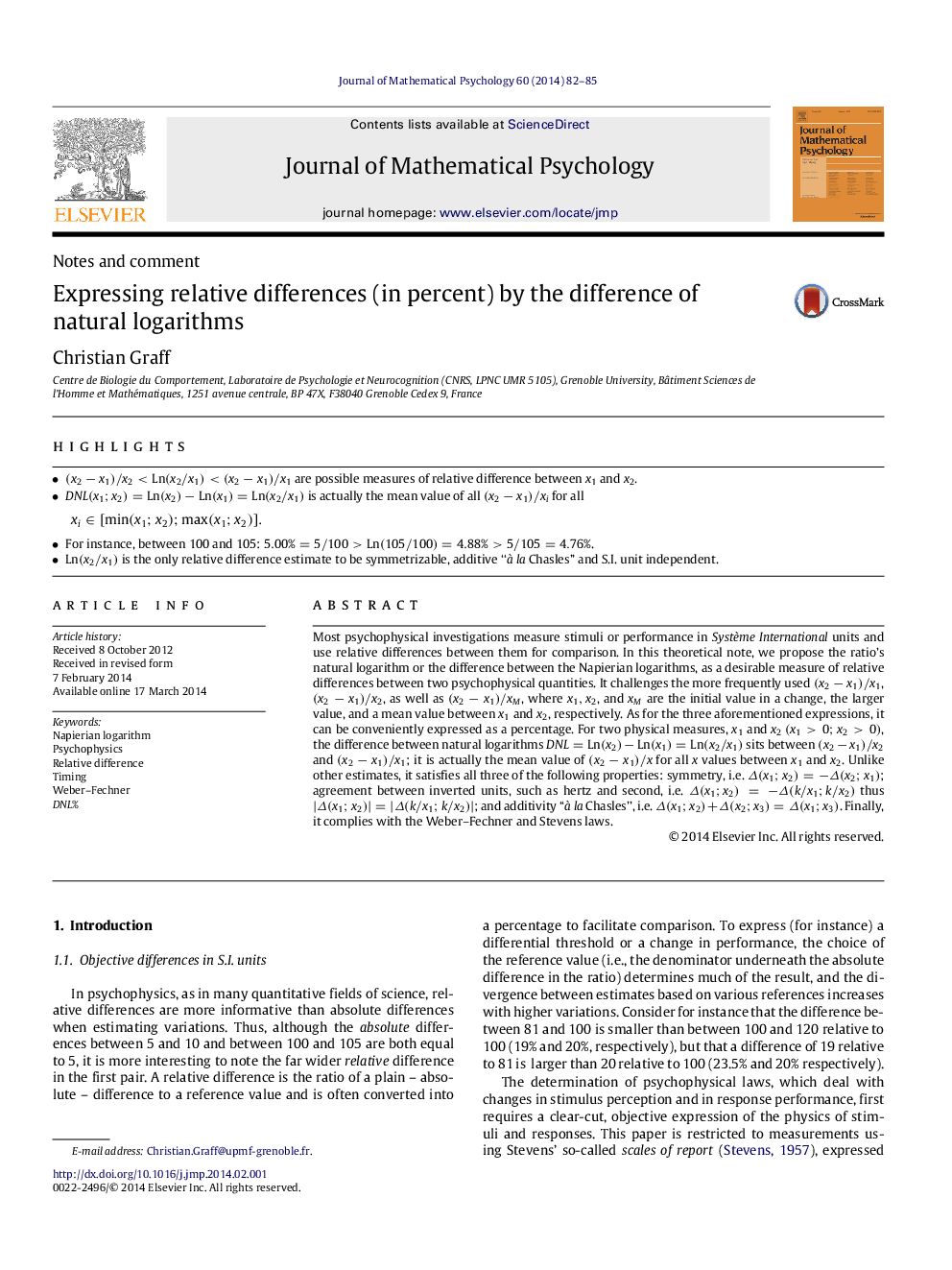| کد مقاله | کد نشریه | سال انتشار | مقاله انگلیسی | نسخه تمام متن |
|---|---|---|---|---|
| 326768 | 542539 | 2014 | 4 صفحه PDF | دانلود رایگان |
• (x2−x1)/x2
• For instance, between 100 and 105: 5.00%=5/100>Ln(105/100)=4.88%>5/105=4.76%.
• Ln(x2/x1) is the only relative difference estimate to be symmetrizable, additive “à la Chasles” and S.I. unit independent.
Most psychophysical investigations measure stimuli or performance in Système International units and use relative differences between them for comparison. In this theoretical note, we propose the ratio’s natural logarithm or the difference between the Napierian logarithms, as a desirable measure of relative differences between two psychophysical quantities. It challenges the more frequently used (x2−x1)/x1(x2−x1)/x1, (x2−x1)/x2(x2−x1)/x2, as well as (x2−x1)/xM(x2−x1)/xM, where x1,x2x1,x2, and xMxM are the initial value in a change, the larger value, and a mean value between x1x1 and x2x2, respectively. As for the three aforementioned expressions, it can be conveniently expressed as a percentage. For two physical measures, x1x1 and x2(x1>0;x2>0), the difference between natural logarithms DNL=Ln(x2)−Ln(x1)=Ln(x2/x1) sits between (x2−x1)/x2(x2−x1)/x2 and (x2−x1)/x1(x2−x1)/x1; it is actually the mean value of (x2−x1)/x(x2−x1)/x for all xx values between x1x1 and x2x2. Unlike other estimates, it satisfies all three of the following properties: symmetry, i.e. Δ(x1;x2)=−Δ(x2;x1)Δ(x1;x2)=−Δ(x2;x1); agreement between inverted units, such as hertz and second, i.e. Δ(x1;x2)=−Δ(k/x1;k/x2)Δ(x1;x2)=−Δ(k/x1;k/x2) thus |Δ(x1;x2)|=|Δ(k/x1;k/x2)||Δ(x1;x2)|=|Δ(k/x1;k/x2)|; and additivity “à la Chasles”, i.e. Δ(x1;x2)+Δ(x2;x3)=Δ(x1;x3)Δ(x1;x2)+Δ(x2;x3)=Δ(x1;x3). Finally, it complies with the Weber–Fechner and Stevens laws.
Journal: Journal of Mathematical Psychology - Volume 60, June 2014, Pages 82–85
